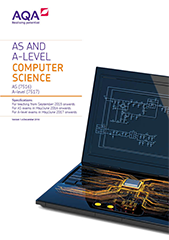3.9 Fundamentals of communication and networking
Communication
Communication methods
Content |
Additional information |
|---|---|
Define serial and parallel transmission methods and discuss the advantages of serial over parallel transmission. |
|
Define and compare synchronous and asynchronous data transmission. |
|
Describe the purpose of start and stop bits in asynchronous data transmission. |
Communication basics
Content |
Additional information |
|---|---|
Define:
|
|
Differentiate between baud rate and bit rate. |
Bit rate can be higher than baud rate if more than one bit is encoded in each signal change. |
Understand the relationship between bit rate and bandwidth. |
Bit rate is directly proportionate to bandwidth. |
Networking
Network topology
Content |
Additional information |
|---|---|
Understand:
and:
|
A network physically wired in star topology can behave logically as a bus network by using a bus protocol and appropriate physical switching. |
Types of networking between hosts
Content |
Additional information |
|---|---|
Explain the following and describe situations where they might be used:
|
In a peer-to-peer network, each computer has equal status. In a client-server network, most computers are nominated as clients and one or more as servers. The clients request services from the servers, which provide these services, for example file server, email server. |
Wireless networking
Content | Additional information |
|---|---|
Explain the purpose of WiFi. | A wireless local area network that is based on international standards. Used to enable devices to connect to a network wirelessly. |
Be familiar with the components required for wireless networking. | Wireless network adapter. Wireless access point. |
Be familiar with how wireless networks are secured. | Strong encryption of transmitted data using WPA (Wifi Protected Access)/WPA2, SSID (Service Set Identifier) broadcast disabled, MAC (Media Access Control) address allow list. |
Explain the wireless protocol Carrier Sense Multiple Access with Collision Avoidance (CSMA/CA) with and without Request to Send/Clear to Send (RTS/CTS). | Knowledge of Carrier Sense Multiple Access/Collection Detection (CSMA/CD) as used in, for example, Ethernet, is not required. |
Be familiar with the purpose of Service Set Identifier (SSID). |
